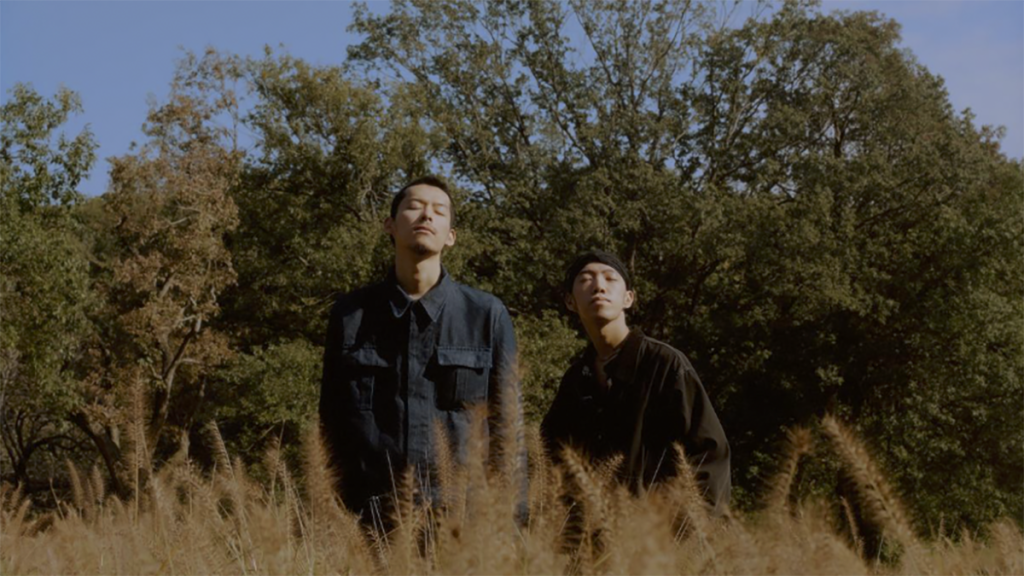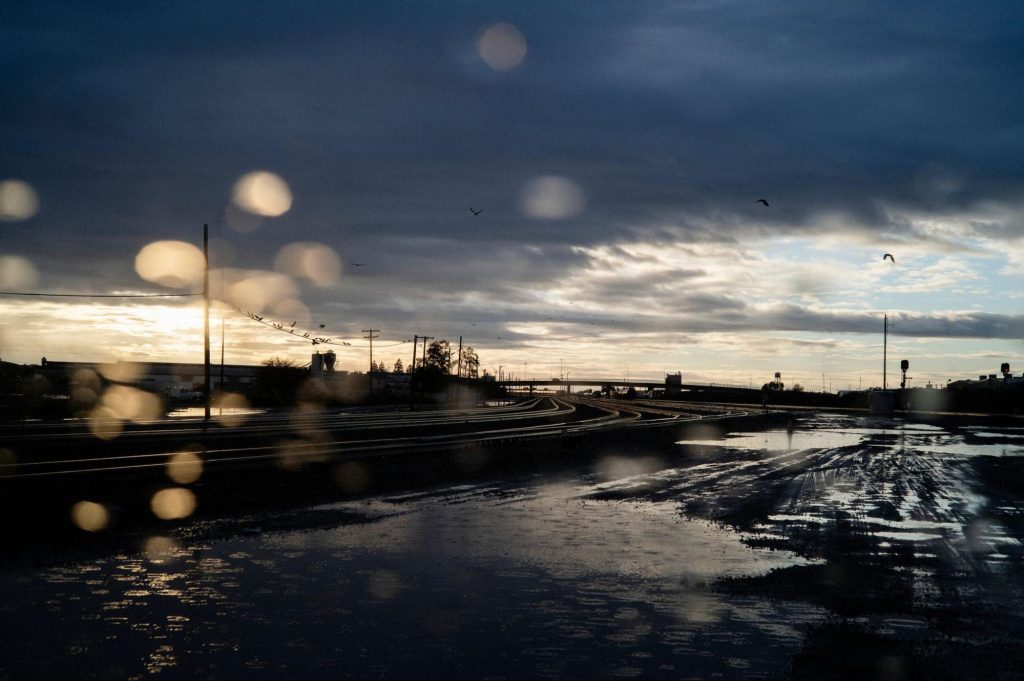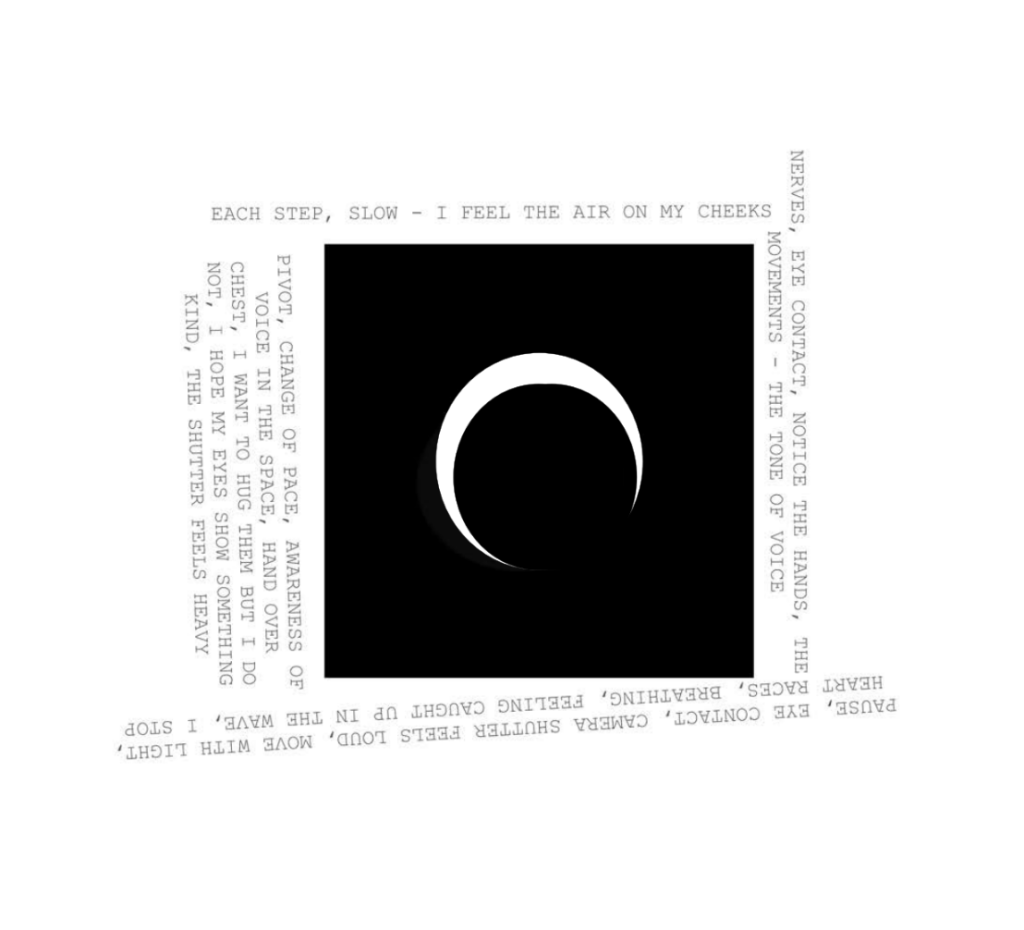
Photo: Gili Benita
How to slow down, and down, and down
Demystifying the visual journalism process
Question: What measures do you take, and what concerns come up for you when a photo session is extra sensitive?
Brian Frank, photojournalist: When entering a space to work with someone in immediate danger or trauma I lean towards smaller, quieter gear. It helps me remember to work slowly. If I were to take out a large zoom lens or flash in that space…it just draws so much attention and can be very intimidating. All these small decisions matter. And I’m intentional about the fact that if I feel someone is over it (photographing) – I don’t push it any further. I try to pay really close attention to nonverbal cues. Most people rarely will say “I’m done” and I never want it to get to that point anyways. I pay very close attention to that body language and I don’t push — I pivot — I put the camera down.
Gili Benita, photojournalist: When we photograph, we have to come to this understanding that the power dynamics are always there, even if there is no “obvious trauma.” A person steps into a room with a camera and suddenly they have a certain power that the person being photographed doesn’t have. And the participant naturally feels a certain way about that. We need to take that into consideration. And it’s worth saying that all of this comes with trial and error — I had moments that I failed doing this, moments that I feel ashamed about, moments that I am not sure I feel 100% comfortable with. But I am human. Nobody is perfect. For me, it really comes down to understanding your power and the other person’s energy.
You are photographing people that are not used to being photographed. With people who are having more trauma, there is also the issue of that trauma now being exposed. There naturally is a fear of trusting, of being with someone else, of doing certain things and opening up. When you are aware of and being gentle with these dynamics people really appreciate that. It’s about being a human first – before any images are made.
When people relay to me after, that they felt that comfortable and safe and it was cathartic – that is way more important than the photos themselves.
Create an informed approach
There is no one-size-fits all formula for photographing, collaborating and working with survivors of trauma, which means it’s imperative to slow ourselves down enough to respond to each individual and situation uniquely. While we are preparing to enter a new space, we can ask ourselves:
- How sensitive is the session?
- What space are we working in?
- How apprehensive do they feel?
- What are their restraints and boundaries?
- What are my limitations?
- With all of these factors in mind, we can consciously decide how to proceed.
These questions directly inform the choices we make heading into an assignment or when hiring and preparing as a team for a sensitive story:
- What will our creative direction with the visuals be and why?
- If hiring a photojournalist, what skills and experience are we looking for and why? Is it someone we have worked with before ? How will I brief the photographer on the sensitivity of the story?
- How will I brief the photographer?
- How has this topic been visualized in ways that we want to avoid – are we being conscious of the harm of stereotypical images?
- How will we create a different kind of photographic approach?
- Based on the sensitivity, what considerations will the photographer take into account when choosing their equipment? In cases of sensitivity or discomfort, we encourage photographers to lean on minimal gear with no setup. Having too much gear, or flash, or a team of visual artists to help assist may only increase the participant’s discomfort and nerves.
Every situation and individual will require a different approach. However, for the majority of sensitive stories, less may be more: less gear, less set up, less technical complexity, less time. Here is where we commit to the idea that trust is more important than vision, safety is more important than aesthetics. The emphasis here is on slowness and intentionality.
Demystify the Process
The below are excerpts from individuals who have been photographed following a traumatic event, responses have been kept anonymous.
Question: Is there anything that you wish would have been handled differently?
A: I wish the journalist would have explained to us the process. We aren’t in the media. We have never done this. We don’t know how this works. If we interview for hours, and recount our abuse and highly personal, traumatic experiences, and in the end, only a sentence is used, or only one image or even none were used, it feels shocking. Why could that not have been explained to us, so we understood the possible outcomes? Listen, even if the consent process was as straightforward as: “Hey, an interview like this usually lasts a few hours. This is normal when dealing with sensitive stories like yours. But the end result will only be around a ten minute video at most, and some segments we use online may be two to three minutes long.” This would have given me some idea of what will happen, and how the process works. It would have helped me understand what to expect. I just wish that participants would have more access to how these stories are built and why. We are giving so much vulnerability here. Why keep us in the dark? I guess what I am saying is to try to remove the element of surprise by all means possible. We don’t need more surprises.
E: You get your hopes up during these sessions. You relive very intimate, difficult moments from extremely traumatic experiences. It takes so much for someone to invite you in, to tell stories like these, or to let you in their private space to photograph them. The photographer talked me through the process. He told me that there was a likelihood that I may not end up in the publication, or if I did, it may not be that many photos, even though he was taking a lot of images. It was important for me to understand this before signing on. This helped my boundaries and expectations. Anyone who has gone through trauma has this sensitivity towards being treated not as an entire person. Power has already been taken away from us. That’s essentially what a traumatic experience is. And if we open up, we risk being vulnerable all over again. If I see the released article and suddenly all my contributions have been cut by the editor without them letting me know — it feels like that opening up was for nothing. I feel like things were taken from me all over again. It’s just about communication and trust. It’s really scary, not knowing. You are asking me to trust you, why can’t I be able to trust you back?
Centralize the participant
Allow the person(s) you’re photographing to guide the conversation, ensuring that their voice and experiences remain central.
- Seek out common ground with each participant.
- Embrace silences and pauses, recognizing their value for reflection and processing.
- Prioritize the participants’ well-being by taking breaks, checking in and offering pauses for water or breath. It’s simply uncomfortable to have a camera in front of you for that long.
- Be quick to pivot if a certain direction causes tension, trusting your intuition to change course as needed. Do not push. Pivot.
- Regularly deconstruct and repeatedly articulate your process: Don’t assume participants understand your editorial approach. Clearly explain potential outcomes — such as if no images will be used or their story may not appear in the final piece. Let them know how you work, including how many images you typically take versus how many are likely to be published.
- Work together. Ask the participant for their ideas on additional details to photograph, or locations in the home, or any thoughts they may have on the visuals.
- In the end, our goal is to avoid causing further harm by pushing materials, plans, or an unwanted vision into a space of vulnerability. Often we need far less than we realize.

Reflection questions
- How might slowness change the way that I understand and work with someone’s story?
- What worked well in our last sensitive story, and where is there room for improvement?
- In the past, have we debriefed the process clearly with participants? What could we have explained better?
- What part of our process, as photographers or writers, might feel mysterious or disorienting to someone not familiar with our field? How can we bridge that gap and demystify it next time?
- What gear choices can I make to better reflect sensitivity and intimacy in a vulnerable place?
Cite this article
Jacklin-Stratton, Jennifer; and Blesener, Sarah (2025, Nov. 4). How to slow down, and down, and down. Reynolds Journalism Institute. Retrieved from: https://rjionline.org/news/how-to-slow-down-and-down-and-down/


